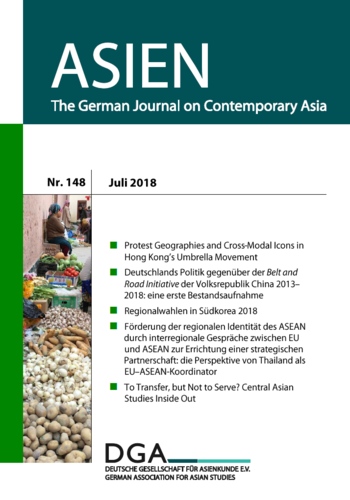Regionalwahlen in Südkorea 2018
Etwas mehr als 38 Millionen südkoreanische Bürgerinnen und Bürger waren am 13. Juni 2018 bei den siebten landesweiten Regionalwahlen aufgerufen, ihre Stimmen abzugeben – über 60% machten davon Gebrauch. Die regierende Gemeinsame Demokratische Partei (GDP) gewann diese Wahlen deutlich, während die rechtskonservative Opposition, allen voran die Liberale Partei Koreas (LPK), klar abgestraft wurde. Insgesamt kann das Wahlergebnis als Reaktion auf die enttäuschende Politik der beiden rechtskonservativen Vorgängerregierungen und insbesondere auf den Skandal um Park Geun-hye (vgl. Mosler 2017) verstanden werden. Knapp ein Jahr nach dem Amtsantritt des liberalen Präsidenten Moon Jae-in im Mai 2017 geben diese Wahlen der neuen Regierung zunächst Rückenwind. Dieser Aufsatz erklärt das System und die Bedeutung der Wahlen in Südkorea, fasst die Ergebnisse der diesjährigen Regionalwahlen zusammen und analysiert deren Ausgang.
The paper analyzes the 2018 local elections in South Korea. It starts off by explaining the country’s election system, which besides separate presidential and general elections also features local ones too. After discussing the evolution of the local election system since its introduction in 1987, and the political background to its somewhat late fully fledged realization in the middle of the 1990s, the paper continues by explaining details of the various offices that are elected at two different regional levels. After briefly describing central aspects of the given voting rights, and discussing the characteristics and current developments of political parties, the text then turns to the analysis of the election results. In the beginning, basic parameters are given – such as voter turnout rate as well as the overall distribution of votes – in a historical comparison, pointing out in the process the landslide victory of the government party of the newly (May 2017) elected liberal president Moon Jae-in. This is followed by a discussion of participation by and outcomes for female candidates in the election. Finally, the results of the simultaneously held by-elections and the reelection of twelve National Assembly members are explained and put into context. The third section of the paper addresses the reasons behind the observed outcomes, in particular against the backdrop of the last two rightist-conservative governments and the new liberal one too. The paper is summed up by a conclusion that takes a brief look into the near future, and tries to make sense of the regional elections' results — in particular regarding the Moon-administration’s likely subsequent performance, as well as forecasts for the upcoming general elections in 2020.

